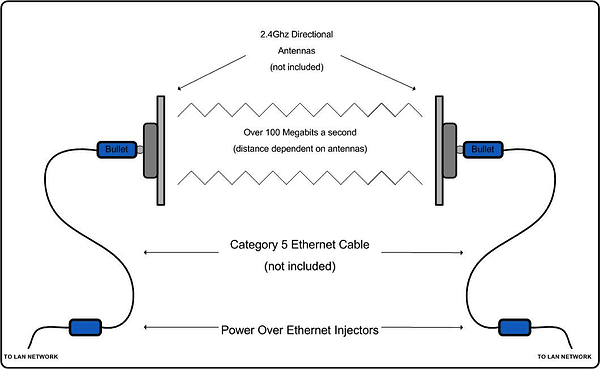Recently, one of our resellers came across a problem when a two different properties and a third building located close to each other and had come under a single owner who wished to combine the hotels’ phone systems into a single system.
In the past, the most likely answer would have been to physically lay or pull cable in to connect the properties and extend the both local area network (LAN) over CAT5 and or fiber cabling and multi pair outdoor direct bury phone cable to extend the PBX. This alternative proved to be very expensive to implement and our reseller searched for other more cost effective options. The next option was to use the existing cable plant installed by the phone company. This would result in a “leased” line scenario with the hotel owner paying a high monthly cost to use the existing cabling and the billing would continue forever. Also, the property owner would be at the mercy of the Telco to maintain the cable and forced to call them with service and connectivity problems. Again the cost, especially over time, was not practical.
Using FCC unlicensed frequencies of 5.x GHz, or 2.4 GHz the reseller and the hotel opted for a wireless “bridge” to span the short distance. This requires the installation of small panel antennas on the roof of each building with a clear line of sight between the antennas.
The cost of the radios and antennas was under $1500 plus installation of data cabling from the LAN to each radio/antenna end point. Because the Voiceware by PhoneSuite is an IP system, the hotel was able to extend their data network and install FXS analog gateways at the smaller property on the extended LAN to connect to the base property over the wireless connection. Without an IP phone system, cabling would have been required to extend both the PBX and the LAN from the base property.
Installed correctly, wireless radios in various frequencies are a cost effective way to provide reliable point to point data connectivity, and for short distances, the cost is quite low given the alternatives. In this case the cost of installing new underground conduit was over $5000 and would result in delays to the project and disruption of the hotels’ business. The annual cost of the leased line solution from the phone company was over $1400/year in perpetuity, so the savings were obvious. Wireless data transmission properly installed can easily deliver very high speed data connectivity at 5 “9”s (99.999%) reliability expectation and need very little ongoing maintenance short of physical destruction of the radio/antenna endpoints. Back-up power to the radios should always be implemented as well. Wireless links can operate in a point to point and/or point to multipoint scenarios and are a very valuable tool to consider when extending your LAN. Installation of wireless systems should always be performed by experience radio technicians to be sure of optimal performance

